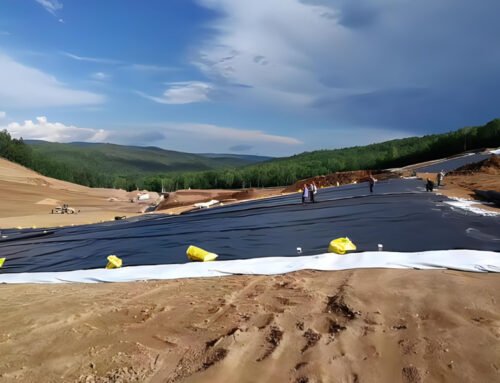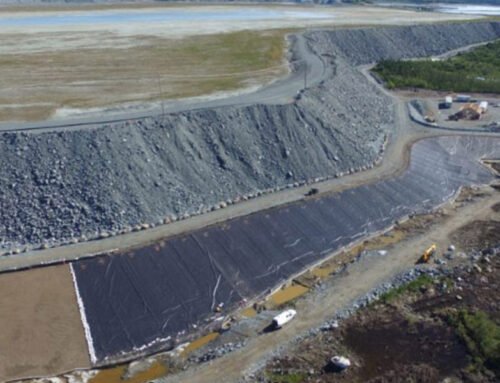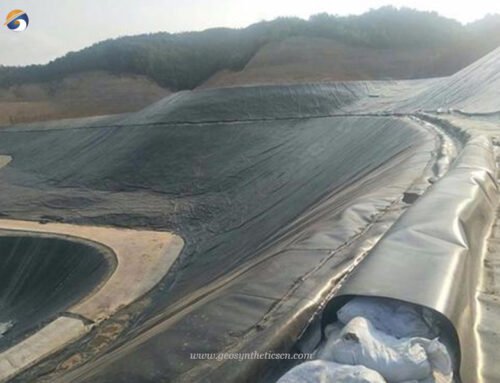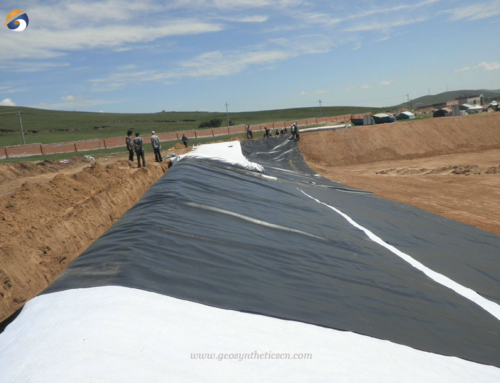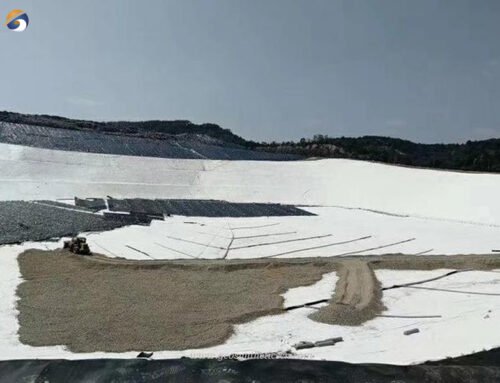HDPE impermeable membrane, also referred to as HDPE geomembrane liner, is a waterproof material composed of polymer as its primary raw material. It is categorized into three types: low-density polyethylene (LDPE) geomembrane, high-density polyethylene (HDPE) geomembrane, and EVA geomembrane.
The HDPE impermeable membrane, or geomembrane, combines a plastic film as an anti-seepage substrate with a geotechnical anti-seepage material composed of non-woven fabric. It serves as a building material that provides both anti-seepage and moisture-proof properties, with the primary anti-seepage performance relying on the plastic film’s characteristics.
The HDPE impermeable membrane is manufactured by blending polyethylene resin with carbon black masterbatch, anti-aging agents, antioxidants, ultraviolet absorbers, stabilizers, and other additives. The resulting blow-molded product finds extensive application in water conservancy projects such as tailings treatment, warehouses, dams, cofferdams, canals, artificial lakes, reservoirs, and similar structures where seepage prevention and moisture control are crucial.
This HDPE impermeable membrane effectively prevents water leakage, ensuring the integrity and safety of water containment structures. Its application contributes to the successful implementation of water management projects, providing reliable and durable anti-seepage solutions.
1. CASE STUDY of HDPE Impermeable Membrane for Tailings Treatment Project in Peru
- Location – Peru
- Product(s) – HDPE Geomembrane
- Application – tailings treatment project
2. Why Chose HDPE Impermeable Membrane for Tailings Treatment Project
Tailings storage poses significant challenges, including the risk of flow, collapse, vegetation damage, and accidents, particularly during the rainy season when collapses and landslides are more prone to occur. The height of tailings pond dams also poses security concerns. Additionally, the composition of tailings and residual beneficiation agents can cause severe damage to the ecological environment, especially when tailings contain heavy metals. Sulfides within the tailings produce acidic water, which further leaches heavy metals, posing a threat to the entire ecological environment.
Currently, tailings treatment methods commonly involve using them as filling material in underground mining goofs, such as water-sand filling or aggregate mixed with cement. Afforestation is another approach. However, the most cost-effective treatment method for tailings is transforming them into sand and utilizing them as raw materials for building materials. Tailings sand can be used in the production of ceramsite, concrete aggregates, and other construction materials. It can replace a portion of machine-made sand in concrete production, as well as be utilized for road construction and pavement materials. However, when tailings contain toxic substances, radioactive materials, or heavy metal ions, anti-seepage measures are necessary to prevent the contamination of groundwater with harmful substances.
Implementing effective anti-seepage treatments ensures that tailings do not pose a threat to groundwater quality, mitigating environmental risks and safeguarding ecosystems.
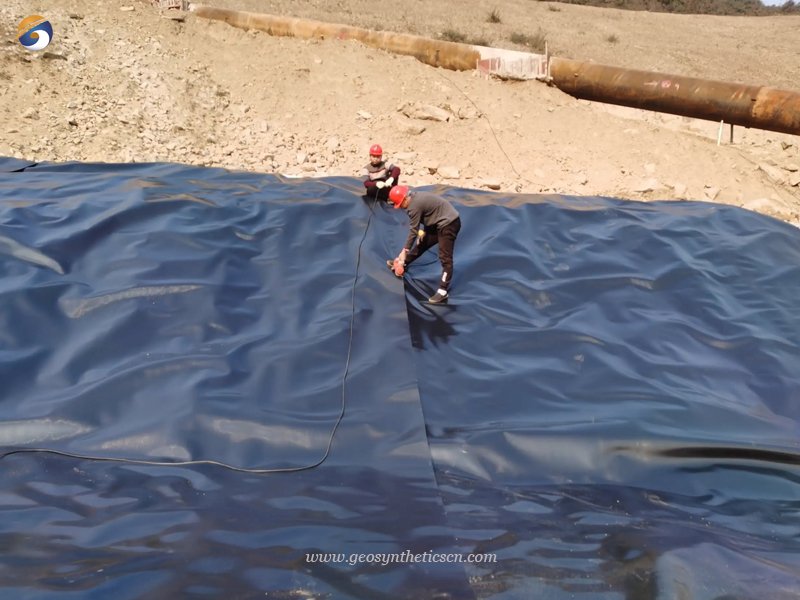
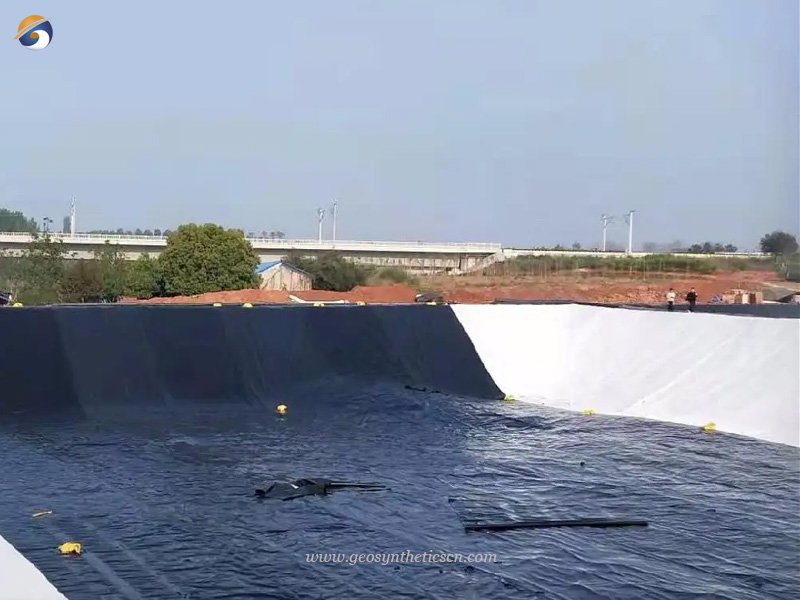
3. Solution of HDPE Impermeable Membrane for Tailings Treatment Project in Peru
We provide geomaterials according to the needs of customer projects and provide installation instructions.
In summary, the welding process of the anti-seepage geomembrane in a tailings treatment project involves using a stable power source and employing the double-track hot-melt welding method. The seams are closed for easy tightness testing, and the joint’s tensile strength should meet or exceed the standard and the strength of the base metal. Hot-melt extrusion welding is used in inaccessible areas. The base surface moisture content should be controlled below 15%. Surface cleaning is necessary before welding to remove contaminants, and precautions should be taken to avoid rain. The welding machine parameters should be adjusted based on temperature and material properties. Defects such as virtual welding and missing welding should be avoided, but if they occur, repairs can be made using a hot-melt extruder. Dislocated welds and “T” joints should be repaired properly. Damaged sections should be promptly cut off and repaired, ensuring a reasonable overlap width. Voids and shrinkage defects should be removed and re-welded. During slope overlap, the lower mulch surface should be positioned below the higher membrane surface. Splicing joints should meet anti-seepage standards, and tension on the welding surface should be avoided to prevent loosening.
4. Benifits of HDPE Impermeable Membrane for Tailings Treatment Project in Peru
The HDPE impermeable membrane exhibits exceptional tensile strength, enabling it to meet the demands of high-standard engineering projects. Its robust tensile properties make it suitable for applications where strength is crucial.
Geomembrane, as an anti-corrosion material, demonstrates excellent chemical stability, effectively resisting the corrosive effects of strong acids, alkalis, and oils. It serves as a reliable barrier against corrosion, ensuring long-term protection.
The HDPE impermeable membrane is a high-strength and chemically stable material used for anti-corrosion purposes. It exhibits exceptional tensile strength, heat and cold resistance, and weather resistance. The geomembrane has a high anti-seepage coefficient and provides reliable waterproofing capabilities. It is made of high-quality virgin resin with additives for enhanced performance. The HDPE geomembrane is widely used in various applications, such as biogas digesters, tailings storage sites, and subway projects, due to its resistance to environmental stress cracking and chemical corrosion.
5. Specificatipns of HDPE Impermeable Membrane for Tailings Treatment Project in Peru
- Total HDPE Geomembrane quantity–56,900 squares meters
- Geomembrane Specifications – 2.0mm
- Each roll size is 7m*50m
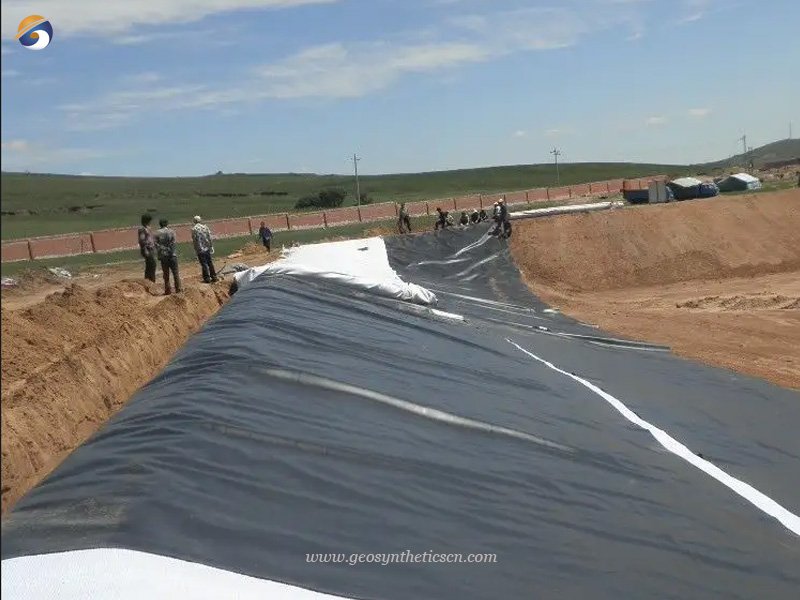

About GEOSINCERE
GEOSINCERE has been dedicated to manufacturing wholesaling geotexitle and geosynthetics products and solutions to worldwide customers since its foundation in 2007. Our main innovative, high quality products include geotextiles, geomembranes, geogrids, geocells, geosynthetic clay liners, and drainage boards, etc al.
GEOSINCERE offers both high quality geosynthetic products but also professional design and installation service. OEM, ODM, custom development and fabrication are also available. If you have any questions or inquiries, please contact us, we will reply as soon as possible.

